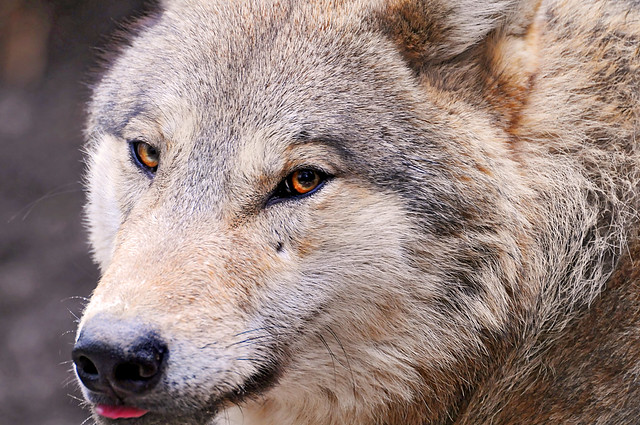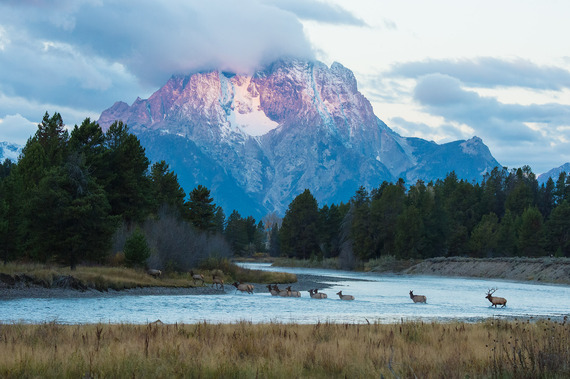(Let's hope this works. Thank you, Rachel!)
15 October 2014
Mr. C. M. Wooley
Acting Regional Director
U.S. Fish & Wildlife Service
5600 American Boulevard West, Suite 990
Bloomington, MN 55437-1458
Dear Mr. Wooley,
Thank you for your kind reply dated 7th October 2014 in response to our letter of concern
dated 15th August 2014 (attached here in its latest version dated 10th October with new
signatures and clarification of key points). Your letter addressed several aspects of post delisting
monitoring (PDM) in the Western Great Lakes (WGL) wolf population, which we would like to
revisit.
On behalf of the US Fish and Wildlife Service (USFWS), you offered,
“…the Service no longer serves as a regulating entity to protect the wolf… [the
Service does] not at this time have a role in regulating management of gray
wolves in any of the states of the WGL… “
However the Endangered Species Act (ESA) of 1973 (as amended) reads,
“MONITORING.—(1) The Secretary shall implement a system in cooperation
with the States to monitor effectively for not less than five years the status of
all species which have recovered to the point at which the measures provided
pursuant to this Act are no longer necessary ...” (emphasis added, 16 USC 1531
Sec.4(g))
and the PDM rules published in the Federal Register require the USFWS to exert
regulatory authority as follows:
"PDM generally focuses on evaluating (1) demographic characteristics of the
species, (2) threats to the species, and (3) implementation of legal and/or
management commitments that have been identified as important in reducing
threats to the species or maintaining threats at sufficiently low levels. We are to
make prompt use of the emergency listing authorities under section 4(b)(7) of
the Act to prevent a significant risk to the well-being of any recovered species.
Section 4(g) of the [Endangered Species] Act explicitly requires cooperation with
the States in development and implementation of PDM programs, but we
remain responsible for compliance with section 4(g) and, therefore, must remain
actively engaged in all phases of PDM." (emphasis added and passages
highlighted on p. 90–91 in the 2006 Congressional Federal Register, 50 CFR
71(58): 15266-15305)
Therefore we ask respectfully that you correct the deficiencies in monitoring and exert
your regulatory authority. The remainder of this letter addresses the case for prompt
emergency relisting as articulated above.
On behalf of the USFWS, you wrote,
“Although these declines [in Wisconsin’s wolf population] are the result of
significant changes in wolf management since delisting in 2012, wolf numbers
remain well above levels that we cited as potential causes for concern in our
PDM plan."
We are pleased you agree that significant management changes have occurred as
described in our 15 August letter.
Significant management changes are cause for concern by PDM rules:
"Other Factors Indicating a Potential Cause for Concern” included "A significant adverse
change in wolf, wolf prey, or wolf habitat management practices or protection across a
substantial portion of the occupied wolf range in the WGL...” (highlighted on p. 14,
in FinalWGLDPSPDMPlan)
We explained why the changes were adverse in our 15 August letter and their
significance. We add to this concern with new information below. We also explain why
the USFWS will not be able to detect declines in the Wisconsin wolf population without
implementing effective monitoring and adequate regulatory mechanisms.
Adequate regulatory mechanisms would have ensured that the problems identified by
our team and other independent actors were detected by the USFWS or its appointed
experts. The leader of that team has communicated with us and with your office to
acknowledge our concerns and to acknowledge that the USFWS had not been made
aware of the problems until we pointed them out. Independent scientific review is
needed to fully account for the significant changes in wolf management and the flaws in
monitoring data and interpretation that we identified in the state report.
New information described below adds to our prior concerns over the significant
problems with monitoring in the PDM period and suggest significant risks for the well being of the Wisconsin wolf population.
In addition to all the reasons noted in our 15 August 2014 letter (new unregulated hunting method, new harvest, and under-reported poaching) we now add additional new concerns about the State of Wisconsin’s wolf management:
• Data on successful reproduction of Wisconsin wolf packs have not been
presented publicly or presented to the independent scientific community for
review. These data were provided in the past, hence interannual comparisons
require them. These data are essential to proper estimates of population status,
because substantial population declines can occur at moderate levels of mortality
if reproduction is severely impaired.
• Wisconsin did not submit all wolf carcasses for necropsy as required, “The wolf
management plans for Minnesota and Wisconsin commit the respective DNRs to
conduct necropsies on dead wolves” (50 CFR 15266–15305 and also in USFWS
[2008]). Without these data we cannot assess if poaching has risen with initiation
of harvest or deregulation of hound training in Wisconsin.
In sum, mortality data are not reported using the best available science and these data
remain unclear >60 days after our first letter of concern and over two years after
delisting. To this we add that no data on breeding have been reported and causes of
death of wolves are not being carefully documented via necropsy. We see numerous
problems with implementation of the ESA and PDM rules therefore.
In the face of mutually acknowledged significant changes in management and no contest
of our concerns identified on 15th August, existing regulatory mechanisms are inadequate to detect substantial change in the Wisconsin wolf population. Therefore we
urge emergency relisting pending independent scientific review.
We ask respectfully that you exert your regulatory authority to enact emergency relisting
during independent scientific review of the significant changes in management and
evaluate the raw data from monitoring, as requested in our 15th August letter.
We are particularly concerned with statutory mandates for the use of best available
science, interannual comparability in post-delisting monitoring (PDM), and adequacy of
existing regulatory mechanisms.
Our recommendations cannot be adequately addressed by revision of existing or future
state reports alone. Adequate regulation implies adequate monitoring. The methods and
the data should be subject to thorough review by scientists with demonstrated, relevant
expertise and without financial or political conflicts of interest. The USFWS procedures
currently do not meet these criteria. In the absence of expedited changes to PDM
policies and practices in response to our concerns, we strongly recommend emergency
relisting and an independent, scientific peer review similar to that conducted by NCEAS
(2014). We recommend emergency relisting so that independent review can be thorough
and comprehensive prior to additional inadequately regulated harvests.
The USFWS itself echoed our recommendations when it wrote, “We are to make
prompt use of the emergency listing authorities under section 4(b)(7)” of the ESA.
We consider this letter and the prior efforts detailed below to be good faith efforts to work
with the agency. I would like to re-emphasize that the intent of our involvement in the
Wisconsin PDM process is to the use of science in agency decisions and compliance
with the Endangered Species Act of 1973 (ESA). We hope our work will be received in
this spirit.
In conclusion,
1. The USFWS does have the regulatory authority to correct the situation and
enforce adequate, existing regulatory mechanisms by the States.
2. Significant, adverse management changes have occurred in the WGL.
3. The ESA mandates effective monitoring using the best available science.
4. The appointed team’s oversight was not adequate so independent scientific
review is needed in a manner similar to that we described.
5. USFWS rules suggest prompt emergency relisting when serious concerns have
been raised.
6. We doubt the USFWS could detect a substantial decline in the WGL wolves for
all the reasons articulated in this letter and our prior letter.
Respectfully,
Adrian Treves, PhD
University of Wisconsin-Madison
Bradley Bergstrom, PhD
Conservation Committee Chair for the
American Society of Mammalogists and
Professor of Biology, Valdosta State
University, GA
Paul Paquet, PhD
Professor Biology/Geography,
University of Victoria
David Parsons, MS
Carnivore Conservation Biologist, The
Rewilding Institute
Michael Soulé, PhD
University of California Santa Cruz
Project Coyote Science Advisory Board
Jonathan Way, PhD
Founder, Eastern Coyote/Coywolf
Research, Research Scientist, Marsh
Institute, Clark University





























